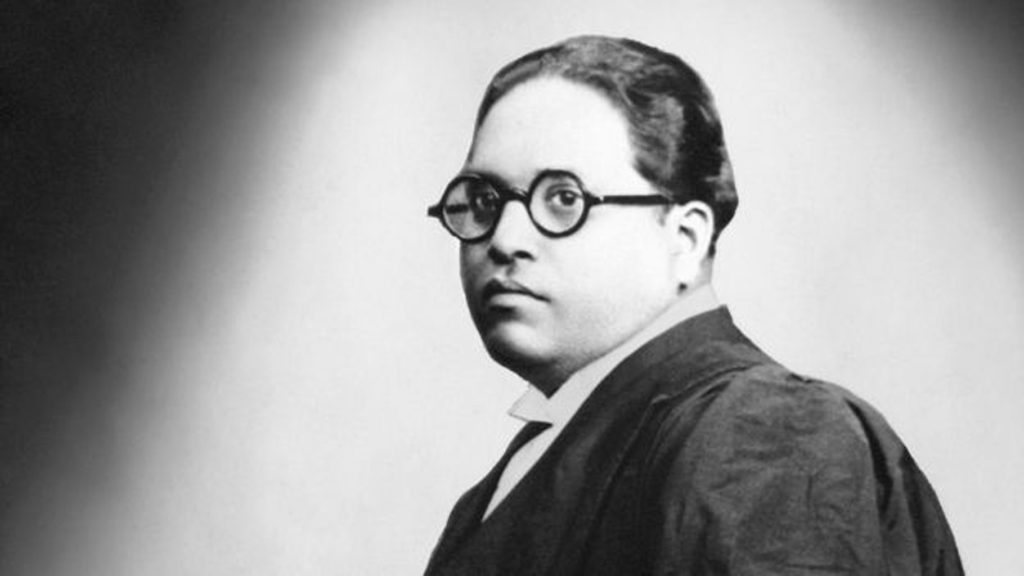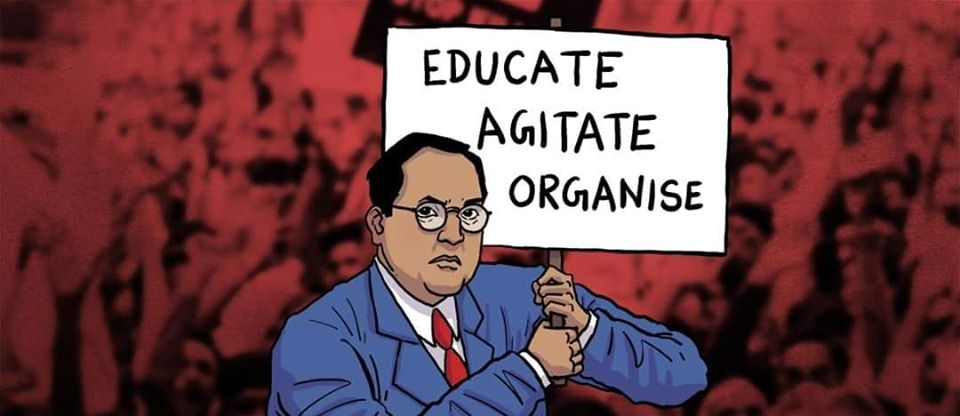
Babasaheb Ambedkar – A Doctor Who Cures Diseased Mind
”A doctor who cures diseased minds” – would be an apt descriptor for Babasaheb. He was a social reformer and talented Indian thinker whose thoughts and ideology proved to be boon for millions of subalterns.
But where is he today? More on the tongue of self-proclaimed Ambedkarites rather than in their minds. He’s limited to portraits hung on office walls and his reach is limited to academia, books, public programmes and governmental nomenclature.
Therefore, it becomes necessary to acquaint our generation with Dr. Ambedkar. Who was he?
Babasaheb all his life mercilessly and bitterly denunciated the pettiness, perversities, hypocrisies and riddles in Hindu Brahmin dharma due to which one shouldn’t be surprised if he’s labelled or tagged as anti-Hindu or anti-India figurine by saffron nationalists.
His movement has had an indelible imprint on the social tapestry of the country and in shaping the socio-political contours to ensure India’s mobility toward social progress and a vibrant democracy.
Let’s imagine life without Babasaheb.
If you’re a woman, would you be studying? Would you have a job on equal terms with your male counterparts? Will you be allowed to step out and live independently or be dependent on the mercy of the family patriarch and live merely as their shadow? What will be your proprietary rights then? Would you be allowed to free yourself from a disastrous marriage? Would you be allowed to marry someone of own choice? Was there any chance of yours breathing outside the dimly lit four walls of your house, especially your kitchen?
Read also – From Ghosts to Cars – 10 Cool Facts About Babasaheb Ambedkar You Didn’t Know
Would Dravidian bahujans have such representation in jobs or in the legislature that we have now? Especially when it comes to Dalits and Adivasis, what would be their representation in the legislature, had there been no provision of reserved constituencies? After 75 years of independence, the chance of a Dalit or an Adivasi getting elected from a general seat is still zero.
Today our youth are pursuing knowledge and taking up technical jobs because education is not a punishable offence anymore for our people. We’re now engaging in economic enterprises, working with dignity, an entrepreneurial class also has emerged from the deprived castes, which is now enjoying various positions abroad, living a life of luxury in cosmopolitan cities and benefiting from globalisation.
Babasaheb ensured access to education, health care resources and other facilities, all to bring us in mainstream so that no one is aloof and therefore remains deprived and backward. On another hand, what does Hindu raj have to offer us except social segregation and exclusion?
Babasaheb has taken us out from the Hindu ghettos to ensure our well-being, personality development and so that we get a concrete social welfare ideology. Today one has the liberty to decide one’s own course of life, without Babasaheb, dominant castes and their social norms would still be deciding our fate.
Was all this a cakewalk for him? No! He pushed through the universal notion of liberty, equality and fraternity into the masses that were mentally blocked with the epistemology of Hindu varna dharma. He disseminated these philosophical ideas into subaltern minds. Previously discussions ideas and philosophy was confined to upper classes. In the 19th century, they manipulated Hindu philosophy to show themselves as progressive (woke in today’s terms) as per their interest which ultimately resulted in Hindu revivalism and that communalism is still the biggest problem in India. In contrast to earlier oriental – revivalist movements, “the brahmin” for him wasn’t the noble or moral class but a symbol of oppression standing at the apex of the discriminatory social hierarchical ladder.

He challenged and successfully faced all odds to uplift the weaker and downtrodden from the vicious trap of vedic aryan scriptural sanctorium. Freeing people from systemic brahminic slavery had unprecedented challenges of its own. Where there’s no slavery in the formal sense i.e. the oppressed did not have the sense that they were caged or been made a slave nor did their masters have a responsibility to feed them, there the oppressed have accepted and reconciled to eternal servitude via the idea of eternal fate.
Read also – Facts About Babasaheb Ambedkar You Didn’t Know
The sole credit for a Buddhist revival in independent India goes to Babasaheb. His conversion initiated the mass conversion of the lower castes to Buddhism, all done with aim to bring them back to the indigenous beliefs which they professed during ancient times, so as to realise their autonomy and self-respect which ultimately culminated in their self-development.
He played an instrumental role in turning the society based on the barbaric aryan principles into a society based on civilised law and principles. This was his first step to inculcate the spirit of constitutionalism further. He synthesised Buddhist precepts, the ideology of Phule, Narayan Guru, Mahatma Ayyankali and the aspirations of Thanthai Periyar with his legal acumen and envisioned all this in the constitution.
He constructed and initiated a series of constructive and ameliorative laws and programmes to redeem the oppressed and disadvantaged forever. He brought political mobilisation in the hitherto sleeping untouchable and depressed classes, motivated and raised their voices, bargained and played political tactics for them which shaped their political strategies further. He demanded and pressured the government to devolve power through labour unions and pressure groups for power-sharing.
Dr. Ambedkar synced industrialization with social justice. He understood the significance of the working class behind nation-building, for he championed the labour and worker causes and demanded full labour employment policy, labour welfare to be sponsored by the state. He wanted an impartial tribunal body to protect the interest of vulnerable workers, advocated changes in the land relationship so as to benefit and materially progress landless labour and boost industrial production so as to have adequate food for the large deprived masses and so as to be complementary and profitably with agriculture.
Read also – Knowing (Reading) ‘The Ambedkar’ And Being ‘An Ambedkarite’: Through The Anti-Caste And Feminist Lens
Babasaheb was aware of the heart-to-heart relationship of brahminical leadership whether they were capitalist, communist or socialist. He warned Bahujan youth against their misguidance. He was well aware of the role of upper-class liberals as the enabler of Hindoo fascism and, knew that whichever of them came in power, it would be the upper castes who would be at an advantage forever, so he raised and worked on the basic things where a man standing at the end of the line would get benefits.
It was due to Babasaheb’s efforts that Indian constitution evolved its own way of secularism suited to India, being cautious of historic communal disasters. This model proved worthy to relax the anxiety and fears in the minds of millions of minorities who live here and fulfill their aspirations and hopes too, to protect their educational and cultural rights, maintain and preserve their self-respect and autonomy.
Surely, all of his dreams have not come true. But this fight is not a day to day thing but a continuous process. To reach the zenith we have to continuously strive toward it and follow Babasaheb’s exhortation of ”Educate, Agitate, Organize“. Rather than falling for different discourses which are actually a pitfall, we must come under one umbrella and not let our momentum fall.
Author – Ankush Kumar




+ There are no comments
Add yours